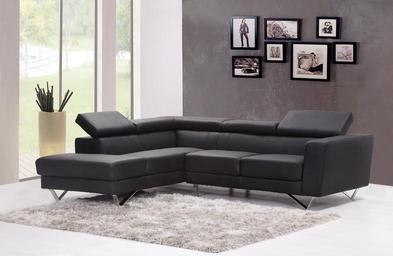Introduction
In the realm of interior design, wall art is not merely a decorative element; it serves as a window into the personality and lifestyle of those who inhabit the space. Capturing personality in photos is essential for creating a cohesive aesthetic that resonates with individuals and transforms environments. Whether you prefer large canvas prints or smaller pieces, the key lies in understanding how to curate these artworks to reflect your identity and aesthetics while enhancing your living spaces.
This article delves deep into the intricacies of wall art placement, exploring various aspects such as visual storytelling, emotional self-expression through decor, and practical tips for selecting and hanging artwork in your home. With 25 sections dedicated to different themes related to wall art and its significance, this comprehensive guide aims to provide you with valuable insights that will inspire your personal spaces with art.
Capturing Personality in Photos: The Key to Successful Wall Art Placement
Capturing personality in photos is an art form that transcends mere representation; it’s about storytelling through imagery. When we consider how photographs can be transformed into wall art, we explore various styles ranging from self-portrait photography to abstract representations that invoke emotions and provoke thought.
Understanding Aesthetic Photos Wall
Aesthetic photos wall refers to a curated collection of images that complement each other in style, tone, and color scheme. These collections can embody a specific theme or narrative, making them not just decor but a visual extension of one's personality.
What Makes an Aesthetic Photo?- Composition Color harmony Subject matter
- Personal interests (travel, nature) Emotional resonance (joy, nostalgia) Aesthetic trends (minimalism, bohemian)
Large Canvas Hanging Tips
When choosing large canvases for your walls, there are several factors to consider:
Scale Matters- Ensure the size complements the space. Consider ceiling height and furniture arrangement.
- Centering above furniture creates a focal point. Grouping multiple pieces can create dynamic arrangements.
- Frameless options for a modern look. Traditional frames for classic elegance.
Personal Spaces with Art: Designing Your Sanctuary
Art is not just decoration; it's an integral part of creating personal spaces that feel inviting and reflective of who you are.
- Incorporating Art into Different Rooms Living rooms: Large statement pieces Bedrooms: Calming landscapes or abstract works Home offices: Motivational quotes or inspiring imagery Creating Inviting Spaces Through Color and Texture Warm colors evoke comfort. Textured pieces add depth and interest.
Transforming Environments with Thoughtful Wall Art Placement
Wall art placement can dramatically alter perceptions of space:
Visual Balance in Design Elements- Balancing heavy pieces with lighter elements. Creating symmetry versus asymmetry based on room function.
- Bright colors energize; soft hues calm. The impact of lighting on artwork perception.
Visual Storytelling in Design
Visual storytelling through art allows us to communicate our narratives without words. Each piece tells a story about who we are or what we believe.
Self-Expression Through Decor: An Artistic Journey
Artistic home decor goes beyond aesthetics—it reflects our journeys:
Identity Exploration Through Art- How personal experiences shape artistic choices. Embracing cultural backgrounds through artistic mediums.
- Experimentation with different styles (abstract vs realism). Engaging with local artists for unique pieces.
Combining Colors and Textures for Maximum Impact
One of the essential facets of wall art placement is understanding how colors interact within your environment:
Color Theory Basics
- Complementary colors enhance vibrancy. Analogous colors create harmony.
Texture Variation
- Mixing materials like wood, metal, or fabric adds dimension. Layering textures helps create depth within displays.
Modern and Traditional Styles: Finding Your Aesthetic Balance
When curating artwork for your walls, consider both modern and traditional styles:
- Modern styles often focus on minimalism and bold statements—think abstract self-portraits or contemporary photography. Traditional styles might incorporate classic portraiture or landscapes that evoke timelessness.
Creating Your Unique Artistic Home Decor Style
Developing your artistic style involves blending elements from various sources:
Discovering Influences
- Explore different cultures' art forms. Attend galleries or exhibitions for inspiration.
Crafting Personal Narratives through Artworks
- Choosing pieces that resonate emotionally. Telling stories visually through arrangement choices.
The Power of Mood Creation in Spaces Through Wall Art
How does wall art affect mood? It’s profound! The selection of artwork influences our emotional states daily:
Calming Artwork Choices
- Landscapes featuring water elements promote tranquility. Soft abstract works reduce stress levels.
Energizing Your Environment
- Brightly colored artworks invigorate spaces. Dynamic patterns stimulate creativity!
Reflection Through Interiors: How Walls Speak Volumes
Your walls can tell stories about you when adorned thoughtfully:
Self-Portrait Photography as Reflection
- Capturing personal narratives visually. Using symbolism in self-portraits enhances communication about identity.
Abstract vs Realism in Portraits
- Abstract portraits evoke emotion while realism provides clarity. Understanding viewer perception shapes how artworks communicate messages.
FAQ Section
1) What should I consider when choosing wall art?
When selecting wall art, consider factors such as scale relative to space, color schemes that complement existing decor, emotional resonance with the piece, and its ability to tell a story about you or your interests.
2) How can I effectively arrange multiple pieces of artwork?
Start by determining whether you want symmetry or asymmetry in your arrangement. Use painter's https://www.oskuleinonenphotography.com/Traces-and-Stories/Tahmelan-Huvilalle-ja-Takaisin tape to outline where each piece will hang before committing to nails or adhesive strips—this helps visualize overall balance!
3) What are some common mistakes people make with wall art placement?
Common mistakes include hanging artwork too high/low, overcrowding walls without thoughtful spacing between pieces, neglecting proper framing techniques that suit both the piece itself & overall decor style!
4) How often should I change my wall art?
Changing your wall art can refresh interiors! Aim for updates seasonally or biannually based on evolving tastes & new inspirations—this keeps spaces feeling fresh while allowing room for artistic experimentation!
5) Can I mix different types/styles of artwork together?
Absolutely! Mixing styles leads to unique visual storytelling—just ensure there's cohesion either through color palettes/textural elements connecting all artworks harmoniously across diverse themes & genres!
6) Is professional framing necessary for all artworks?
While professional framing adds polish & protection against damage especially valuable works—many inexpensive DIY frame options exist today! Choose what matches both budget & desired aesthetic appeal best!
Conclusion
Capturing personality in photos isn't just about taking snapshots; it's about immortalizing emotions and experiences within an artistic context suitable for display on walls at home! By thoughtfully considering aspects such as color combinations combined with texture variations while ensuring balance throughout design elements—the power lies within one's ability not only curate captivating visuals but create inviting atmospheres where authenticity thrives!


In summary:
- Transform environments using aesthetic photos walls tailored personally! Follow practical tips throughout large canvas hanging processes! Cultivate artistically expressive living spaces reflecting individual identities!
Embrace creativity wholeheartedly—and remember: every photograph carries potential meaning waiting patiently until displayed prominently upon those cherished walls!